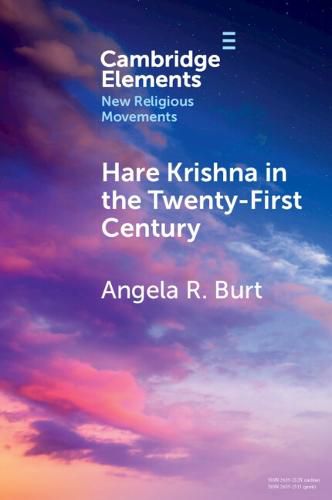Readings Newsletter
Become a Readings Member to make your shopping experience even easier.
Sign in or sign up for free!
You’re not far away from qualifying for FREE standard shipping within Australia
You’ve qualified for FREE standard shipping within Australia
The cart is loading…






The Hare Krishna movement is a modern manifestation of the Gaudiya Vaishnava tradition, which has its roots in sixteenth century West Bengal, India. The tradition was institutionalized in a modern form when it was registered as the International Society for Krishna Consciousness (ISKCON) in New York City in 1966 by A. C. Bhaktivedanta Swami Prabhupada. Its mission was to present bhakti-yoga (the yoga of devotion) to a Western audience. This Element introduces the historical origins of the movement and examines its beliefs and practices within the context of its institutional and community dynamics. It also considers the Hare Krishna movement's changing relationship with mainstream society and its shifting demographic makeup in tandem with key challenges and controversies that have beset the movement throughout its history. The Element concludes by considering how the movement's responses to a new set of issues and challenges are pivotal for its future direction in the twenty-first century.
$9.00 standard shipping within Australia
FREE standard shipping within Australia for orders over $100.00
Express & International shipping calculated at checkout
The Hare Krishna movement is a modern manifestation of the Gaudiya Vaishnava tradition, which has its roots in sixteenth century West Bengal, India. The tradition was institutionalized in a modern form when it was registered as the International Society for Krishna Consciousness (ISKCON) in New York City in 1966 by A. C. Bhaktivedanta Swami Prabhupada. Its mission was to present bhakti-yoga (the yoga of devotion) to a Western audience. This Element introduces the historical origins of the movement and examines its beliefs and practices within the context of its institutional and community dynamics. It also considers the Hare Krishna movement's changing relationship with mainstream society and its shifting demographic makeup in tandem with key challenges and controversies that have beset the movement throughout its history. The Element concludes by considering how the movement's responses to a new set of issues and challenges are pivotal for its future direction in the twenty-first century.